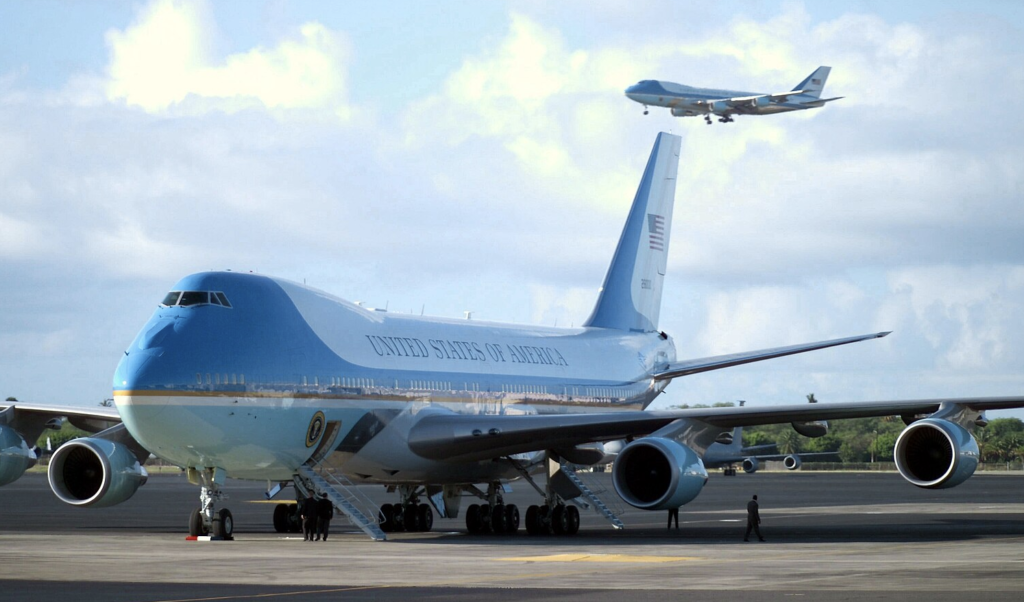Introduction
The Boeing 747, the world’s first wide-body airliner, has become a symbol of progress, ambition, and global connectivity since its maiden flight in 1969. This essay explores the impact of the 747’s design on various aspects of our world. It represents the dreams of a human race that aspires to the stars, revolutionising air transport, granting everyone access to the sky, and spurring globalisation. It will deconstruct the intricate web of technological breakthroughs that made the 747 possible, examine its legacy in shaping the modern aviation landscape, and celebrate its status as a cultural icon that cut cross national borders and generations. During its service the 747 has flown more than 3.5 billion people. Through the lens of the Boeing 747, we will uncover the evolution of aviation and the possibilities that arise when human imagination takes flight.
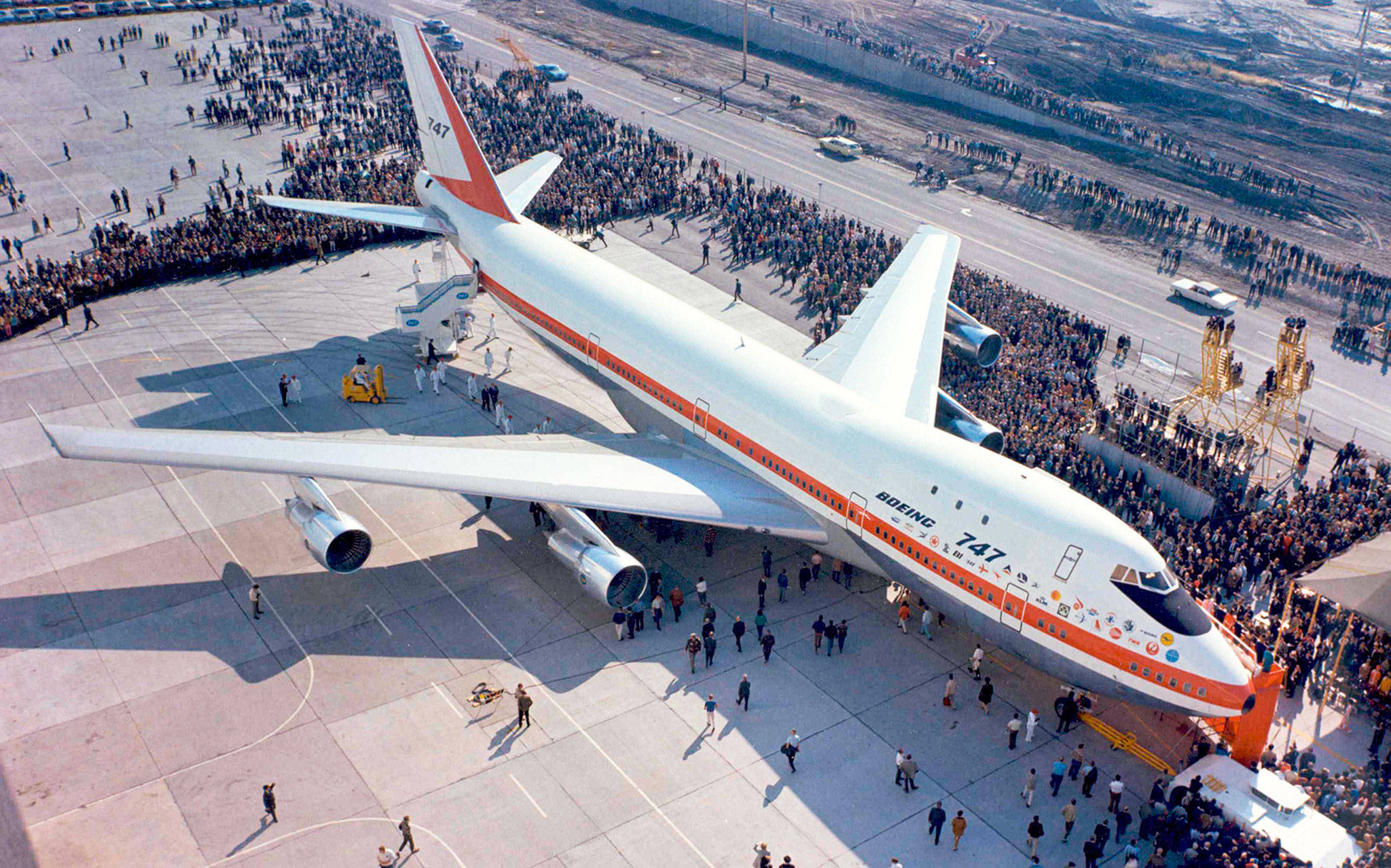
Historical Context
In the early 20th century, aviation was a daring pursuit, reserved for the bold and the adventurous. But as the world hurtled into the mid-century mark, the skies beckoned with promises of progress and possibility. The 1960s emerged as a pivotal era, marking the dawn of commercial aviation’s golden age, where dreams took flight and boundaries dissolved beneath the wings of innovation.
A Skyward Ascent: The Development of Commercial Aviation
Before the 1960s, commercial aviation was a fledgling industry, constrained by the limitations of technology and infrastructure. In those days of propeller-driven aircraft, only a select few could afford the privilege of air travel. However, as the post- World War II globe embraced its newfound affluence and optimism, air transport demand skyrocketed, sparking a race to dominate the skies. With their audacious aerial accomplishments, aviation pioneers such as Charles Lindbergh and the Wright brothers set the foundation for modern aviation throughout the decades preceding the 1960s. Although, it is said that The Wright brothers could have fit their historic first flight inside a 747 . The introduction of reliable aircraft like the Douglas DC-3 in the 1930s ushered in a new era of commercial air travel, making it safer, more efficient, and accessible to a wider audience. With capacity for 350-400 people the 747 once carried 1,087 people at once.

Rise of the Jet Age: The Need for Innovation
Yet, as the world entered the jet age, propelled by the power of jet propulsion, the demand for air travel outpaced the capabilities of existing aircraft. The advent of jet engines promised faster speeds and greater efficiency, but it also presented new challenges. Increased air traffic, longer distances, and growing passenger numbers necessitated a paradigm shift in aircraft design. The Boeing 747 first flew in February 1969, five months before Apollo 11 landed on the moon. Enter the Boeing 747: a marvel of engineering born from the crucible of necessity and ambition. The need for a large-capacity, long-range aircraft loomed large on the horizon, and Boeing answered the call with a revolutionary design that would redefine the very concept of air travel.
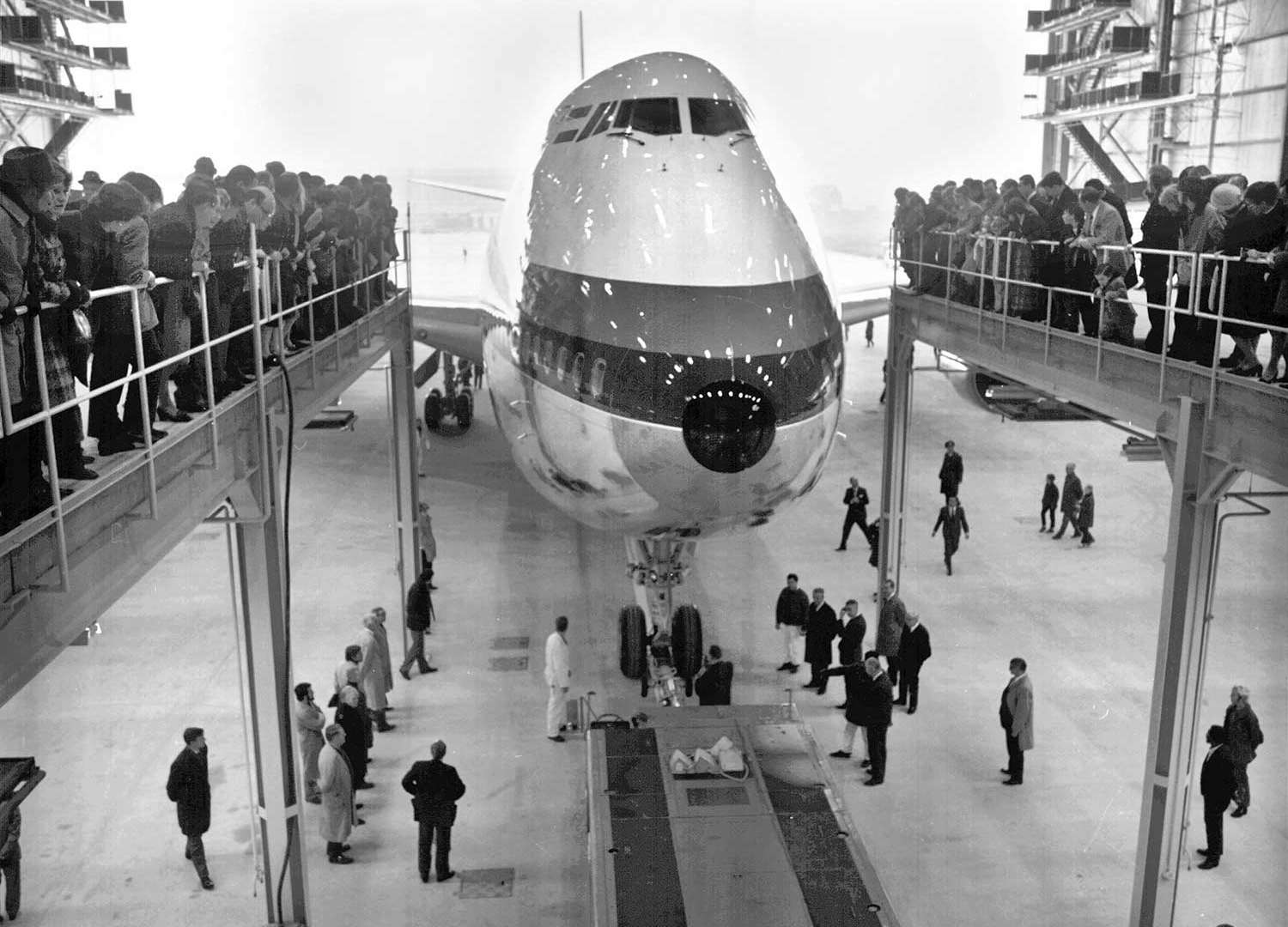
Design And Innovation
Few icons in aviation history are as tall—or perhaps more accurately, as high—as the Boeing 747. The “Queen of the Skies” has caught the imagination of millions of people with its unmistakable silhouette and ground-breaking design elements, going beyond simple transportation to become a representation of human creativity and ambition.

The Distinctive Hump: A Design Marvel
One glance at the Boeing 747, and one cannot help but be captured by its unmistakable feature: the hump. Rising majestically above the fuselage, this distinctive design element not only lends the aircraft its unique profile but also serves a practical purpose. Nestled within the hump lies the cockpit, affording pilots unparalleled visibility and control—a feature that was revolutionary at the time of the 747’s inception. But the hump is more than just a stylistic choice; it’s a feature that distinguishes the 747 from its competitors and demonstrates Boeing’s dedication to innovation and functionality.
Wide-Body Wonder: Redefining Space and Comfort
Step inside the Boeing 747, and you’ll find yourself enveloped in a world of space and comfort unlike anything you’ve experienced before. The wide-body configuration of the aircraft, with its expansive cabin and generous seating capacity, revolutionised the passenger experience, ushering in a new era of air travel luxury. The claustrophobic and small spaces of classic airliners were replaced with a roomy and elegant haven for passengers, which is a monument to the great attention to detail that went into the design of the 747.
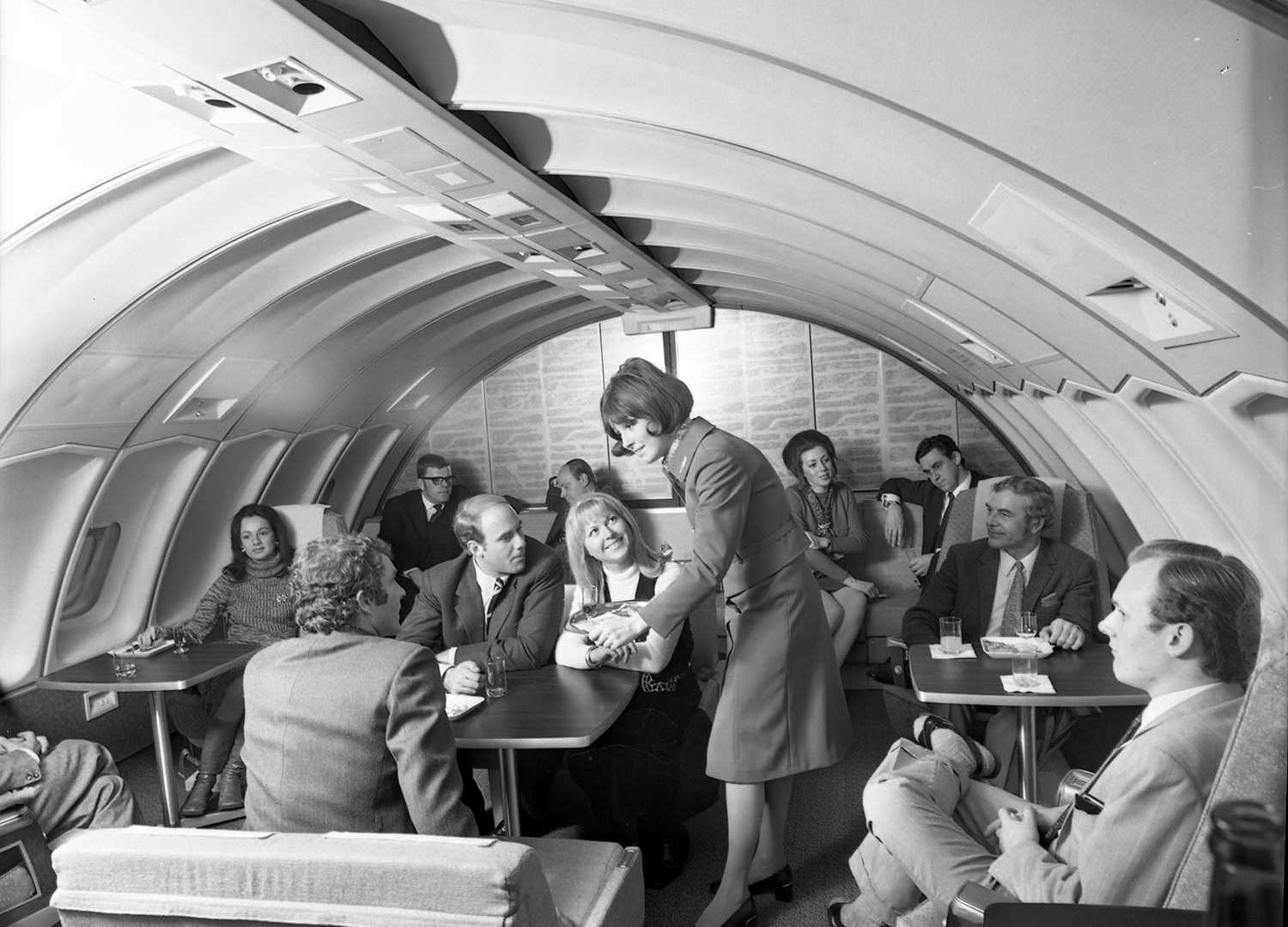
Power to Soar: High-Bypass Turbofan Engines
But what truly sets the Boeing 747 apart—and what propels it to dizzying heights of performance—is its powerplant: the high-bypass turbofan engines. These marvels of modern engineering not only deliver unparalleled thrust and efficiency but also reduce noise and emissions, making the 747 a paragon of environmental responsibility. Coupled with advanced aerodynamics and cutting-edge materials, these engines represent the hight of aviation technology at its time, propelling the 747 into the stratosphere with ease and grace.
Innovating the Future: Advancements in Aerodynamics, Materials, and Manufacturing
But the magic of the Boeing 747 lies not just in its design features, but in the innovative engineering solutions that underpin its construction. From revolutionary advances in aerodynamics that optimise lift and reduce drag to the use of lightweight materials that enhance fuel efficiency and durability, every aspect of the 747’s design has been meticulously crafted to push the definitions of what is possible. Add to that the pioneering manufacturing techniques that streamline production and enhance quality control, and you have a recipe for success that has stood the test of time.
Impact on aviation
With its unparalleled capacity and range, the Boeing 747 ushered in a new era of efficiency in aviation. By carrying more passengers and cargo in a single flight, airlines could maximise their resources and minimise their operating costs, leading to improved profitability and sustainability. Gone were the days of half-empty flights and wasted fuel; the 747 paved the way for a more streamlined and economically viable model of air travel, transforming the industry in its wake. But perhaps the most profound impact of the Boeing 747 lies in its role as a democratiser of air travel. With its vast capacity and affordable ticket prices, the 747 made flying accessible to the masses, turning dreams of distant destinations into reality for millions around the globe. Whether it’s a family vacation to Paris or a business trip to Tokyo, the 747 became the gateway to adventure and opportunity, bringing the world closer together in ways previously unimaginable.
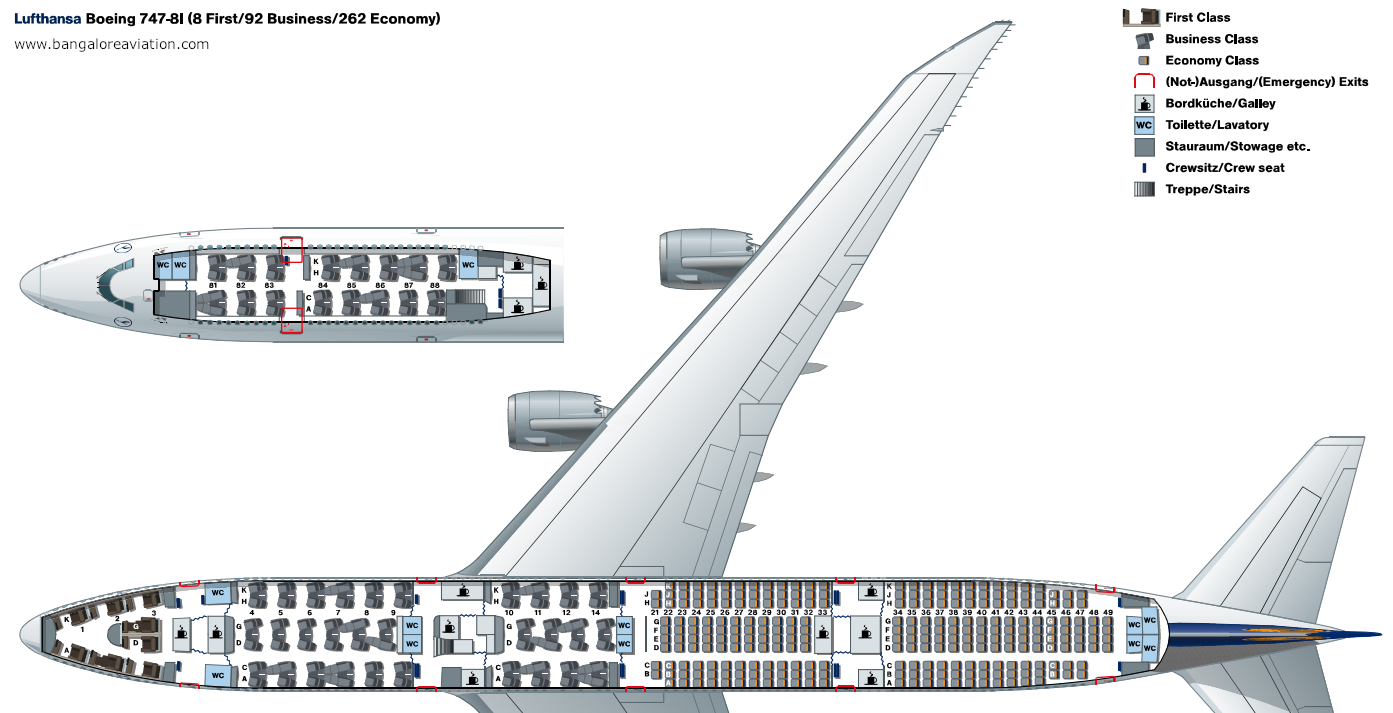
Beyond its impact on individual travellers, the Boeing 747 played a pivotal role in facilitating the globalisation of trade, tourism, and cultural exchange. With its ability to traverse long distances non-stop, the 747 transformed the world into a global village, shrinking the distances between nations and encouraging greater interconnectedness. From the transportation of goods and services to the exchange of ideas and cultures, the 747 became a symbol of progress and collaboration in an increasingly interconnected world. The legacy of the Boeing 747 extends far beyond its practical implications; it has also captured the imagination of people around the world, becoming a cultural icon in its own right. From its iconic silhouette to its starring roles in films, television shows, and advertisements, the 747 has become synonymous with adventure, luxury, and the romance of air travel. Its distinctive hump and graceful wings have inspired awe and admiration in generations of aviation enthusiasts, earning it a revered place in the pantheon of great aircraft.
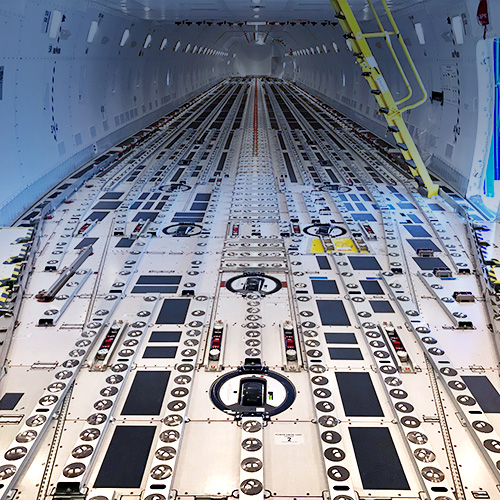
Cultural Icon
The cultural significance of the Boeing 747 extends far beyond the realm of aviation enthusiasts; it has also left an indelible mark on popular culture, making cameo appearances in films, television shows, and literature. From its starring role in disaster epics like “Airport” to its iconic appearance in James Bond films and Hollywood blockbusters, the 747 has become a familiar sight on the silver screen, a symbol of power, prestige, and the allure of the skies. Its unmistakable profile and sheer size have made it a favourite subject for filmmakers and storytellers, who use it as a visual shorthand for the wonders of flight and the thrill of adventure.
The Boeing 747 has also found its place among the pages of novels, memoirs, and travelogues, where it serves as a metaphor for the human desire to explore, to conquer, and to transcend the limits of the known world. From tales of daring pilots and intrepid travellers to reflections on the beauty and majesty of flight, the 747 has inspired writers to reach for the stars and to seek out new worlds beyond the horizon.

But perhaps nowhere is the cultural significance of the Boeing 747 more evident than in its portrayal in advertising. From sleek and stylish airline commercials to awe-inspiring print ads, the 747 has been used as a powerful marketing tool to sell everything from vacations to luxury goods. Its status as the “Queen of the Skies” and its association with glamour and sophistication have made it a natural choice for advertisers looking to evoke a sense of wonder and excitement in their audiences.
When the Boeing 747 took to the skies in 1969, it ushered in a new era of commercial aviation, forever changing the way we think about air travel. Its revolutionary design, featuring a wide-body configuration and high-bypass turbofan engines, set the standard for subsequent aircraft designs, paving the way for greater efficiency, lower operating costs, and increased passenger capacity. The 747’s legacy can be seen in the development of modern wide-body jets, such as the Boeing 777 and Airbus A380, which owe much of their design inspiration to the pioneering work of the “Queen of the Skies.”
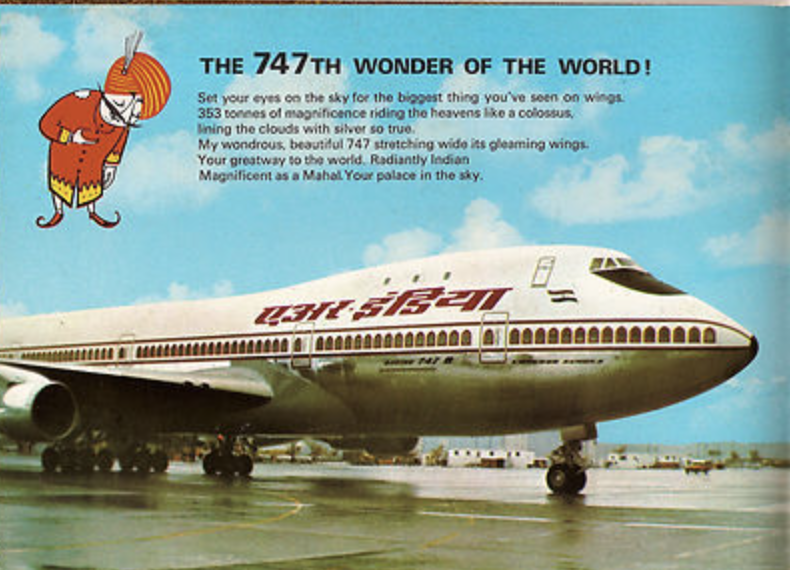
Legacy and Influence
What sets the Boeing 747 apart from its successors is its timeless appeal and relevance in the 21st century. Despite advancements in aircraft technology and the rise of newer, more fuel-efficient models, the 747 continues to hold a special place in the hearts of passengers and aviation enthusiasts alike. Its distinctive hump and graceful wings evoke a sense of nostalgia and wonder, reminding us of a bygone era when air travel was synonymous with glamour and adventure. Even as airlines retire their 747 fleets in favour of newer fuel-efficient models, the “Queen of the Skies” lives on in the pages of aviation history, a symbol of progress and human achievement that will continue to inspire future generations for years to come.
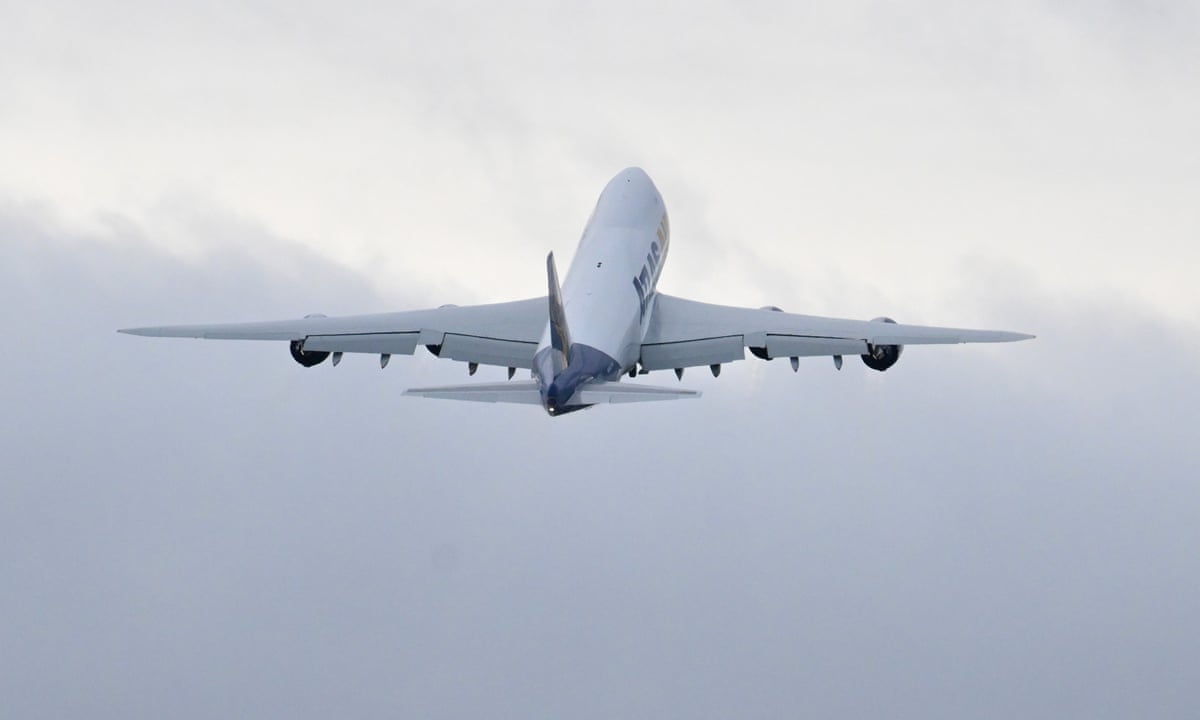
Conclusion
In addition to being an engineering marvel, the Boeing 747 is an example of the endless possibilities of human creativity and imagination. The 747 has changed the commercial aviation industry from its introduction in the 1960s to its ongoing significance in the 21st century, uniting people worldwide and motivating future generations to go higher. Its influence goes far beyond the airport runway; it is ingrained in popular culture and represents ambition, advancement, and worldwide connectedness. The eternal legacy of The Queen of the Skies will fly through the pages of history and encourage future generations to dream and explore.
Feature Image: Air Force One is the official air traffic control designated call sign for a United States Air Force aircraft carrying the president of the United States. Boeing 747 lands at Hickam Air Force (AFB) with US President George W. Bush on board for his first visit to Hawaii while holding office. On the ground, the second Boeing VC-25A. (747). Courtesy| Wikipedia
References:
- According to Silmid’s article “10 Boeing 747 Facts” available at https://www.silmid.com/about/news/archive/10-boeing-747-facts/
- According to an article titled “A Technological Odyssey” published in Time Magazine, available via the Internet Archive at https://web.archive.org/web/20080127015922/http://www.time.com/time/magazine/article/0,9171,878679-1,00.html
- According to American Airlines’ corporate information page on their history, available via the archive at https://archive.ph/20120526202629/http://www.aa.com/i18n/amrcorp/corporateInformation/facts/history.jsp
- According to an article by AP News titled “Boeing delivering the last 747,” Boeing has delivered its final 747 aircraft. The article is available at https://apnews.com/article/boeing-delivering-the-last-747-018b4b60e8d8a40aa5bf039c47d81a9a.
Famous Designs That Changed The World: The Gutenberg Printing Press

